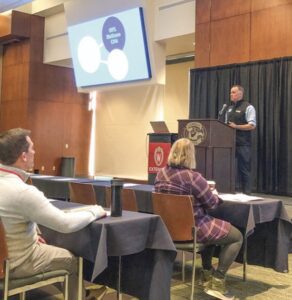-From Ag Proud.com-
Manure is more than just waste on a dairy farm, and the unique ways in which manure can be utilized to better a farm’s ecosystem and maximize profitability were discussed at the Midwest Manure Summit.
Academia, industry allies and dairy producers each brought unique perspectives for how to best manage dairy waste at the 2025 Midwest Manure Summit Feb. 26 in Green Bay, Wisconsin. From anaerobic digesters to in-season applications to fiber bedding and more, manure has gone from a waste to a valuable resource on dairy farms of all sizes, as highlighted during the one-day event.
“The big picture is that farms, especially in California and Wisconsin, operate like cities with a large population,” Mohan Qin said. “Just like a city with wastewater treatment, we want to do what’s best to keep the farm running and not harming the environment.”
Qin, with the University of Wisconsin – Madison, was one of several presenters of the day. She discussed her current study evaluating electrochemical nitrogen removal from manure. Other research reviewed included greenhouse gas mitigation strategies, how to calculate and appropriately use nitrogen credits and field trial data on manure nutrient sensing.
 The audience was captivated by a keynote address on the future of biogas production and livestock manure’s growing space in that production, producer panels and organic discussions to further research and education.
The audience was captivated by a keynote address on the future of biogas production and livestock manure’s growing space in that production, producer panels and organic discussions to further research and education.
Farm-based biogas systems double in two years
The possibilities of raw manure are vast, and capturing the energy from raw manure to be used in other industries continues to appeal to dairy producers and biogas companies.
Most recent data from AgStar shows there are nearly 600 operating farm-based biogas systems across the country, nearly double what was reported two years ago. While biogas production is growing across all sectors, on-farm systems show the most exponential development in comparison to wastewater, food waste and landfill systems.
“It’s a growing industry, especially the ag sector,” said Patrick Serfass, executive director for the American Biogas Council. “… Last year, agriculture became No. 2 [for the number of operational projects]. Agriculture is growing faster than any of the other sectors in terms of total biogas production, and that’s the growth we like to see.” <more>